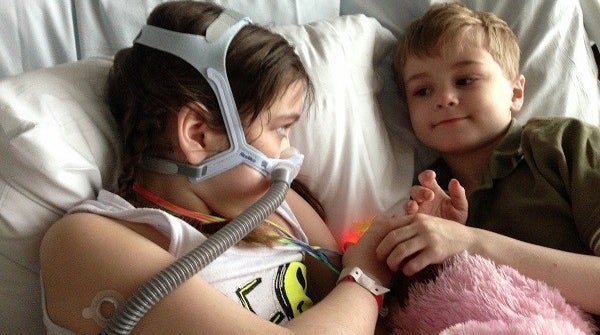Judge’s intervention on behalf of young transplant patients draws criticism

The parents of 10-year-old Sarah Murnaghan successfully challenged existing rules that place children younger than 12 on a pediatric waiting list. (Photo courtesy of the the Murnaghan family)
A judge now has intervened on behalf of two children waiting for lung transplants at the Children’s Hospital of Philadelphia. The move has been criticized by some medical experts who say it sets a bad precedent.
The parents of 10-year-old Sarah Murnaghan successfully challenged existing rules that place children younger than 12 on a pediatric waiting list. Organs donated from children are very rare, so the wait can be long.
Sarah previously only had a shot at adult lungs after they were turned down by adults on that list.
Now Sarah, and another child at CHOP, have been moved to the adult waiting list for organs — which gives them a better chance at receiving lungs quickly.
The second child to achieve placement on the adult list is 11-year-old Javier Acosta. Both children have cystic fibrosis, a genetic lung disease, and their health is deteriorating. Javier’s brother died while waiting for a lung transplant.
The judge’s order will hold until current organ allocation policies are reviewed.
Medical ethicist objects to intervention
The judge’s decision has drawn criticism from experts, among them medical ethicist Art Caplan of New York University, who says it’s not a good idea to change the rules for individual patients.
“If you are going to have a system in the face of life-and-death decision making, it’s pretty dangerous to crack the door open and say, ‘Yeah it’s a system, but maybe you can get a special exemption if you get in the right courtroom,'” said Caplan.
Caplan says these kinds of decisions should be made by people who understand exactly what’s at stake for patients, and who would benefit most from receiving a donor organ.
“Not Congress, not a bureaucrat in Washington, and not even a federal judge in a courtroom,” he said. “Unless there is some blatant discrimination against someone, you really want those bedside decisions made by people who understand what’s going to work.”
Supporters of the judge’s decision say it’s forcing a quick review of existing policies, which may be outdated.
The organization responsible for allocating donor organs, the Organ Procurement and Transplantation Network will review its pediatric policies on Monday.
Dr. John Roberts, president of the OPTN board of directors, wrote in a letter to federal Health and Human Services Secretary Kathleen Sebelius that “understanding the time-sensitive nature of this review, I have scheduled a meeting of the OPTN Executive Committee on Monday, June 10.”
Review could yield better system
Some experts say a review of existing rules could mean new research will be considered.
“It’s quite possible when the people who do transplants get together they can come up with a little bit better system, and I think there’s a strong push to get a uniform registry and collect more data,” said Dr. Thomas Scanlin, a pediatric pulmonologist at Robert Wood Johnson University Hospital in New Brunswick, New Jersey.
The law firm representing both children, Pepper Hamilton LLP, said in a statement that the judge’s ruling has given both patients hope. They also said that the current rules discriminate against children, and are wrong.A court hearing is set for June 14.
WHYY is your source for fact-based, in-depth journalism and information. As a nonprofit organization, we rely on financial support from readers like you. Please give today.

